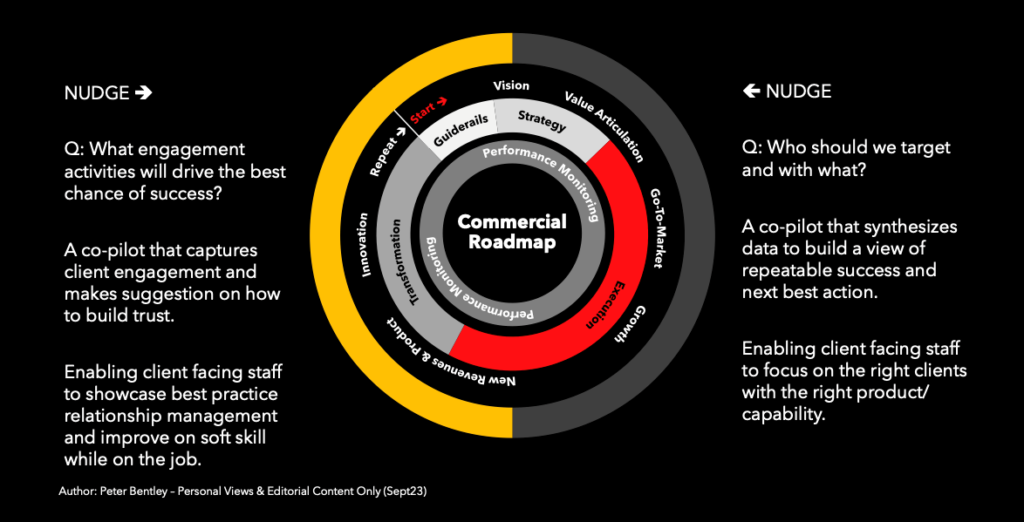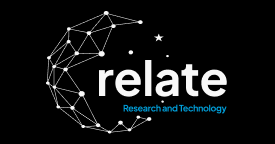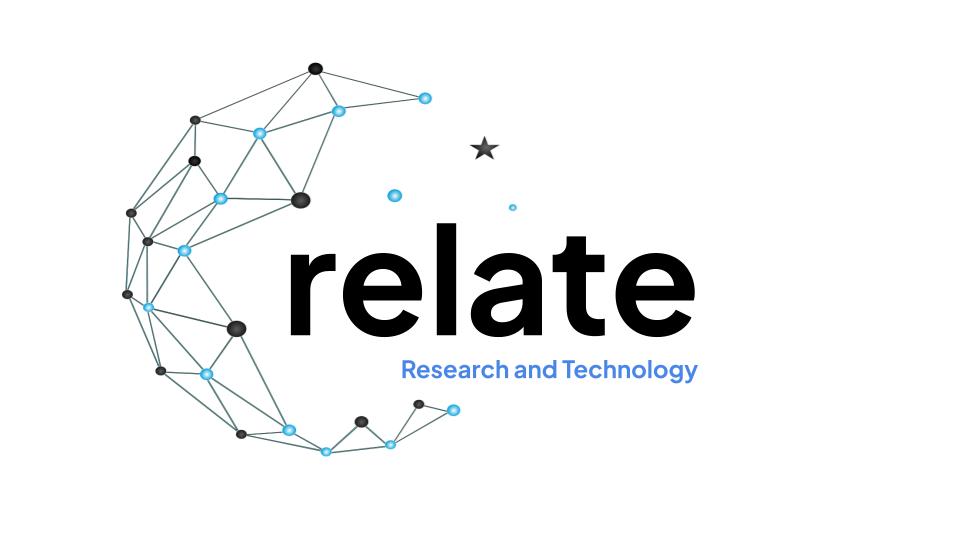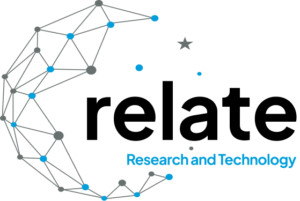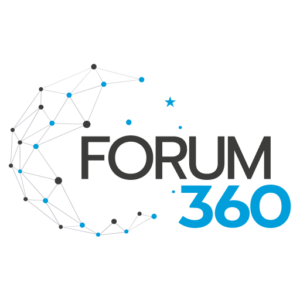The challenge of commercial capability (re)building.

Problem Statement: Who should we target? With what? And what engagement will drive the best chance of success?
Sales is Dead
I have written about the evolution of sales capability for many years. Indeed the title of this article comes from an article I wrote in 2018. In this article I highlighted the benefits of a chatbot to augment, focus commercial capabilities, and target repeatable success.
However – over time – the sales and relationship management functions have been hollowed out and commercial capability reduced. There has been several contributing factors to this trend:
- Covid reduced face-to-face client engagement.
- Covid accelerated a trend of communication disintermediation, face-to-face, phone or email, were supplemented with video calls, numerous messaging systems, webinars, and virtual conferences.
- The rise, or more likely the misunderstood application of, Product Led Growth (PLG) and consumer buying behaviour in business-to-business transactions trumped sales-led approaches.
- Cost-control resulted in client-facing staff becoming more junior and with a broader remit.
- Commercial org structures became fragmented across marketing, product, sales, relationship management, digital, and customer success. All of which were rarely connected.
This combination of factors resulted in:
- Transactional relationships with predominantly product-based sales driven in silos.
- Responsibility for client contact became diversified, unconnected, and often competitive or zero-sum.
- Trusted advisor capability was diminished as credibility was built through digital means.
- A lack of appreciation for the softer skills required to build relationships, articulate value, and ask for money. Weakening the commercial muscle.
This trend for many established firms has exacerbated the ability to grow at a time when profitable revenue growth is THE problem to solve for.
Building Capability & Trust
In previous posts I have written about the ability to sell more, to connect business strategy to product and client strategy more formally – and I have espoused the benefit of a bot (now more popularly called a Co-Pilot) to nudge activity.
I have attempted to communicate a complex workflow that looks something like this:
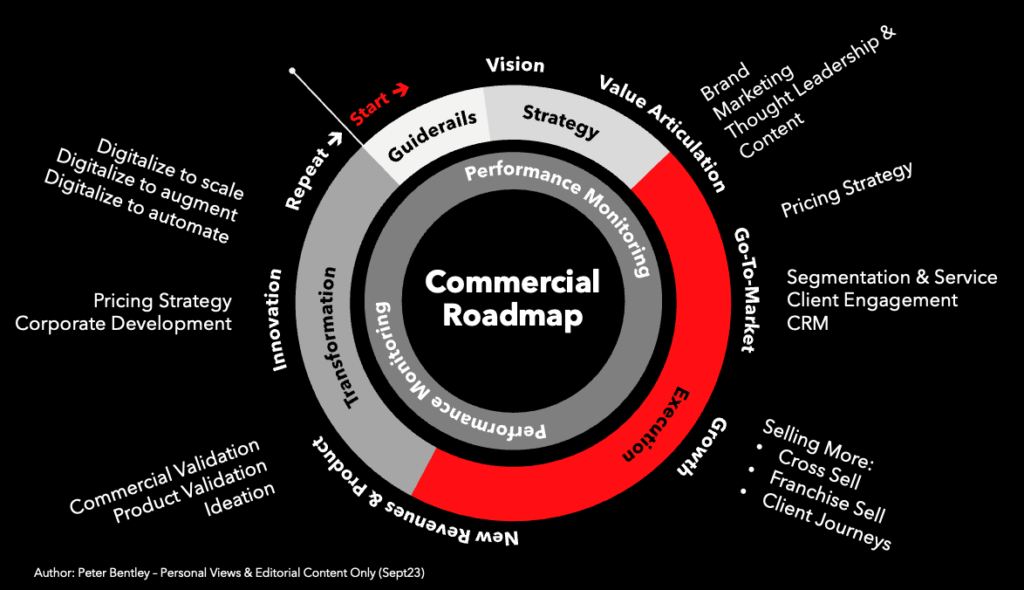
But how do we solve for the challenge of rebuilding capability so that once we know who to target, and with what, we know how to drive the best outcome?
Even if you have strong commercial individuals, imagine if you could take your best commercial executive and elevate everyone else to that level.
Rather than attempt to teach best practice sales – as there has been much written on this – I refer everyone to an established, recognised, and proven model: The Trusted Advisor.
While the focus of the Trusted Advisor is consultancy relationships – I would suggest that a consultative relationship across all businesses provides the best combination of: relationship, understanding, and complex value-add to drive revenue.
“The Trusted Advisor” by David H. Maister, Charles H. Green, and Robert M. Galford emphasizes the importance of trust as the cornerstone of successful relationships. It presents a framework consisting of credibility, reliability, intimacy, and self-orientation (CRIS) to guide advisors in building and maintaining trust with their clients.
CRIS is articulated as a formula that identifies the key workflow to building trust:
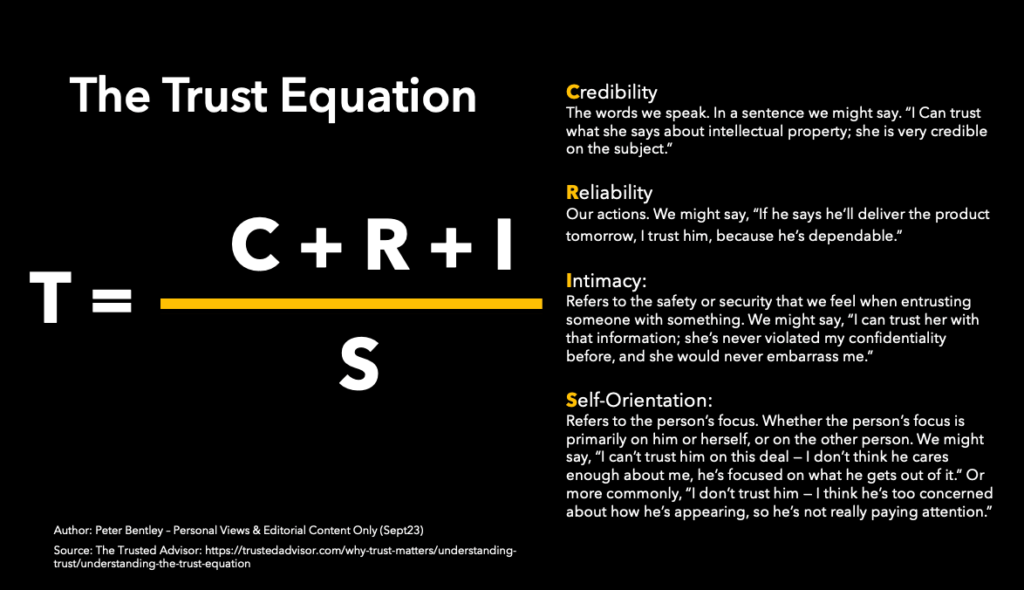
Source: The Trusted Advisor
The fact that it’s a formula means there is a path to using this model and scaling it across the now plentiful modes of client interaction.
Imagine the use of these variables, aligned to the activities and behaviours they encompass, which can then be nudged across the “front-office”.
Historically, the input to person-to-person meetings have been hard to track. Client outputs can be measured, and it’s been assumed the inputs drive those outcomes. Even if we take this assumption for granted, wouldn’t it be good to capture specific actions of the best, which can then “nudged” others to replicate?
The dis-intermediator becomes the enabler.
The very fact that a significant bulk of conversations are now over video calls (virtual conversations of one-to-one people or more), webinars (virtual presentations of one-to-many with a futile attempt to build engagement), or virtual conferences (I’m not sure these ever work), also means we have a plethora of tools to capture, track and help coach different behaviour.
To clarify, “nudge” is what your Fitbit, Garmin or Apple Watch does. It suggests an activity, or highlights an activity completed and tracks it on an ongoing basis – to throw in a Drucker quote – “what gets measured moves”. A bot, a co-pilot and nudge should all effectively been seen as the intervention of a virtual coach – driving positive outcomes.
Imagine being able to take the activities demonstrated as best practice and have a coach nudge you when to ask a question, or provides data points to build credibility, and transcribes conversations to summarise follow ups, which would improve reliability and transparency of client feedback.
In webinars, rather than attempt to force engagement through polls and gimmicks, meetings can be set up to focus on what the client wants to focus. Building credibility. Your coach can help to keep the conversation on track, asks attendees for their questions on registration, and can also recall previous discussions and interactions to help personalise conversation in one-to-many formats.
Even if the meeting is in person, you can use the same conference tools to help provide an honest scribe that can provide post-meet suggestions for improvement, and help with follow up or CRM admin. Imagine not having to write-up meeting notes!
Long Live Sales
The need for commercial capability building is clear, more so that ever. BUT we also need not be tied to historic paths to achieve it. The very technology that has diversified our client engagement, and weakened the trust can also be the very thing that helps build it back up.
We can use the trusted advisor formula to scale high touch value, and raise the lowest common denominator – not just rely on the few sales superstars.
I acknowledge I’ve asked for a fair amount of imagination, but the truth is the data, the tools, and capability are all readily available to augment and elevate our commercial teams. You just need to know where to look and how to apply – and it’s a lot easier that you think.
